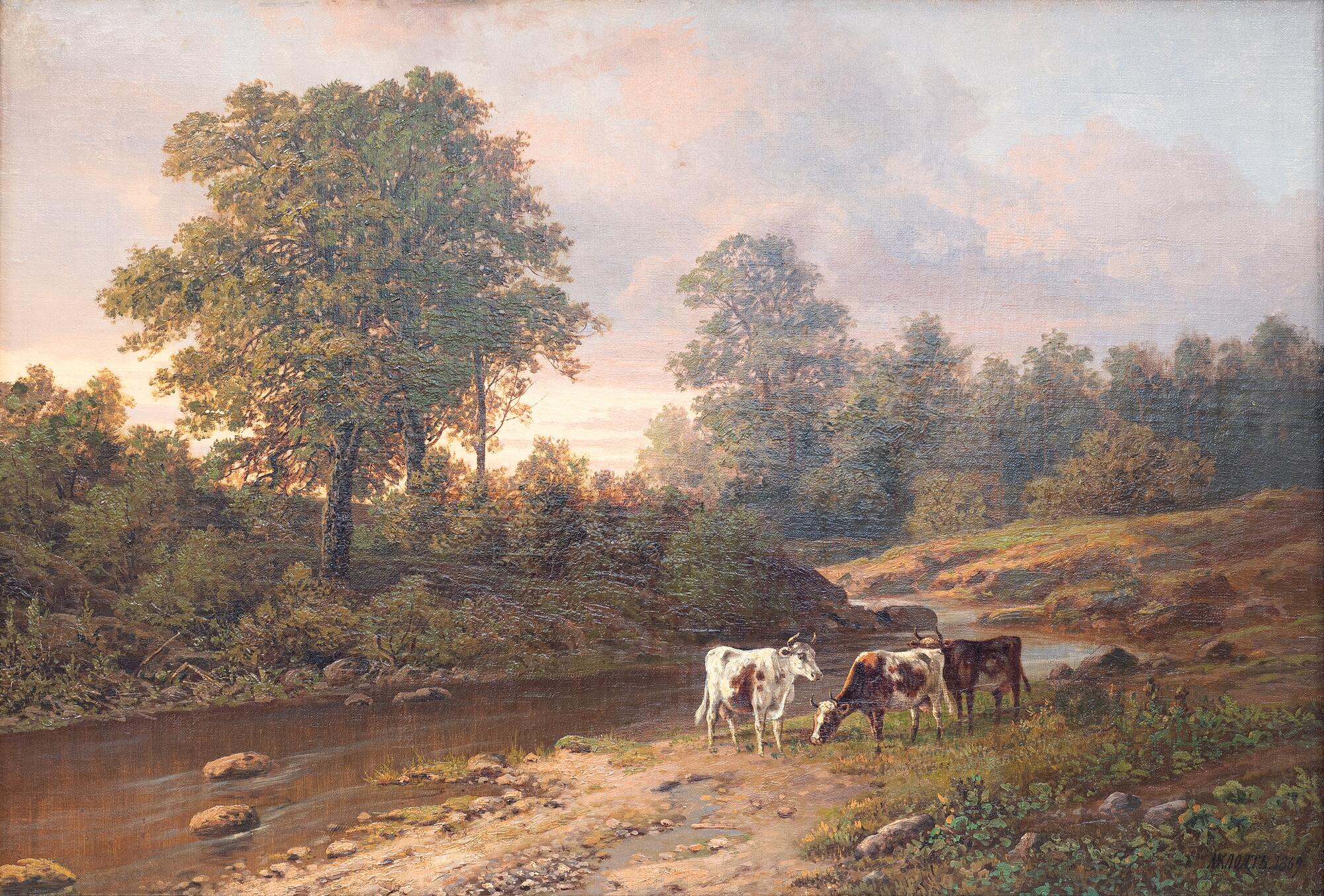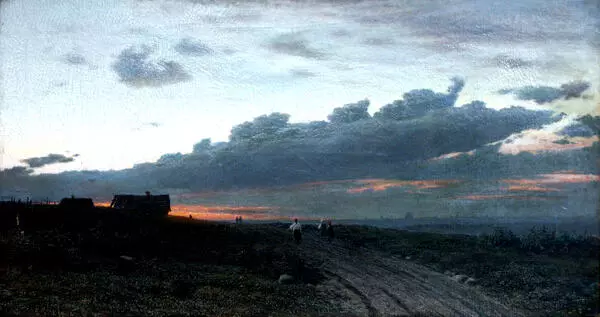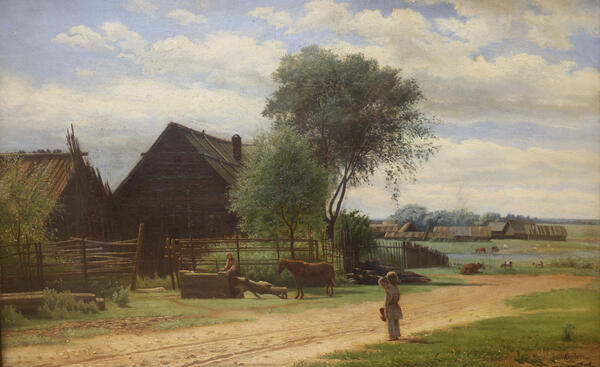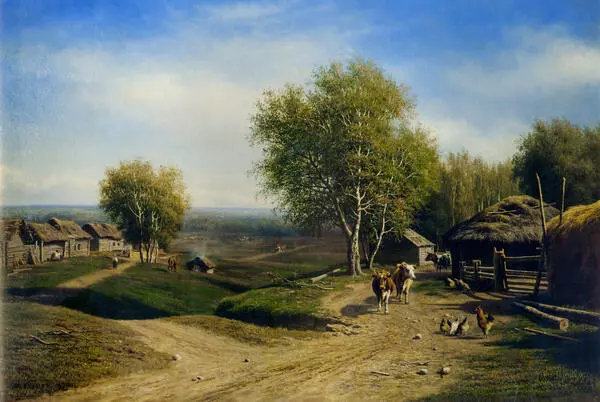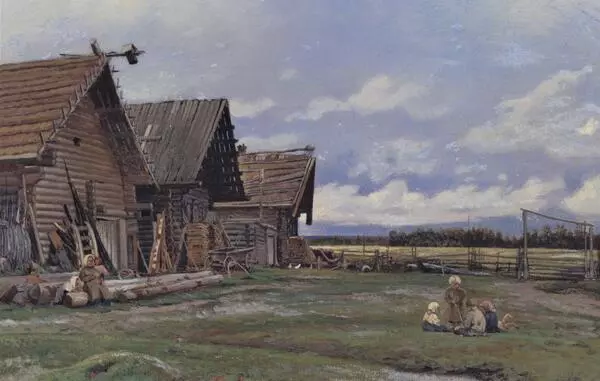Mikhail Konstantinovich Clodt was a Russian landscape painter of the second half of the 19th century, one of the founders of the Wanderers movement.
Clodt was born in 1832 into a family of a military officer in Saint Petersburg. Many members of the family had artistic talents: after retirement, Clodt’s father taught wood engraving at the Imperial Academy of Arts, his uncle was a famous sculptor, and his cousin was a painter. Nevertheless, according to family tradition, the boy was sent to study at the Mining Cadet Corps, where the young man developed an interest in drawing.
In 1851, Mikhail Clodt entered the Imperial Academy of Arts. After graduating from the Academy with a Gold medal, he received the right to go abroad for four years in order to hone his painting skills. However, Mikhail Clodt soon realized that he was not inspired by foreign landscapes.
He sent a request to the Academy of Arts to return to Russia ahead of schedule and spend the rest of the trip painting landscapes at home. Mikhail Konstantinovich found his inspiration in the Oryol region. In Russia, the artist finally found his subject. He devoted his entire work to the images of his native nature, being one of the first artists to depict the Russian rural landscape.
Clodt had a meticulous and conscientious approach to painting. He carefully rendered every detail of the picture, striving for accuracy. The critic Vladimir Vasilievich Stasov said about the artist’s works the following: “Clodt is only looking to capture Russian nature in all its demure state, without any claim of a parade or a gold-embroidered uniform, without which other landscape painters cannot imagine nature. But how much genuine, deep pleasure his truthful pictures bring.”
The painting “Twilight” was transferred to the Murmansk Regional Art Museum in 1999 from the collection of the Murmansk Regional Museum of Local Lore. The work is exhibited in the original frame of the 19th century, which was restored in 2016: large areas and chips of plaster moldings that had been lost were restored, later layers of paint were removed and the original color of the frame was brought back. Despite its small size, the work weighs quite a lot, partially due to the massive plaster frame. The work reflects the characteristic features of Russian nature and the rural landscape. Noticing the most characteristic and everyday motifs, Clodt creates a vivid image of native Central Russian landscape.
Clodt was born in 1832 into a family of a military officer in Saint Petersburg. Many members of the family had artistic talents: after retirement, Clodt’s father taught wood engraving at the Imperial Academy of Arts, his uncle was a famous sculptor, and his cousin was a painter. Nevertheless, according to family tradition, the boy was sent to study at the Mining Cadet Corps, where the young man developed an interest in drawing.
In 1851, Mikhail Clodt entered the Imperial Academy of Arts. After graduating from the Academy with a Gold medal, he received the right to go abroad for four years in order to hone his painting skills. However, Mikhail Clodt soon realized that he was not inspired by foreign landscapes.
He sent a request to the Academy of Arts to return to Russia ahead of schedule and spend the rest of the trip painting landscapes at home. Mikhail Konstantinovich found his inspiration in the Oryol region. In Russia, the artist finally found his subject. He devoted his entire work to the images of his native nature, being one of the first artists to depict the Russian rural landscape.
Clodt had a meticulous and conscientious approach to painting. He carefully rendered every detail of the picture, striving for accuracy. The critic Vladimir Vasilievich Stasov said about the artist’s works the following: “Clodt is only looking to capture Russian nature in all its demure state, without any claim of a parade or a gold-embroidered uniform, without which other landscape painters cannot imagine nature. But how much genuine, deep pleasure his truthful pictures bring.”
The painting “Twilight” was transferred to the Murmansk Regional Art Museum in 1999 from the collection of the Murmansk Regional Museum of Local Lore. The work is exhibited in the original frame of the 19th century, which was restored in 2016: large areas and chips of plaster moldings that had been lost were restored, later layers of paint were removed and the original color of the frame was brought back. Despite its small size, the work weighs quite a lot, partially due to the massive plaster frame. The work reflects the characteristic features of Russian nature and the rural landscape. Noticing the most characteristic and everyday motifs, Clodt creates a vivid image of native Central Russian landscape.
